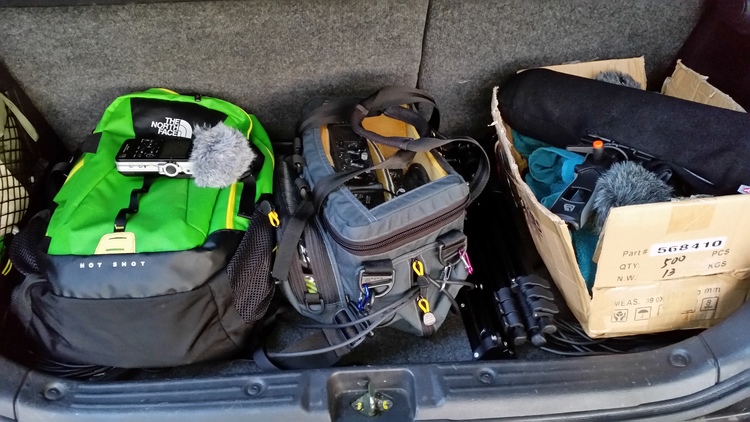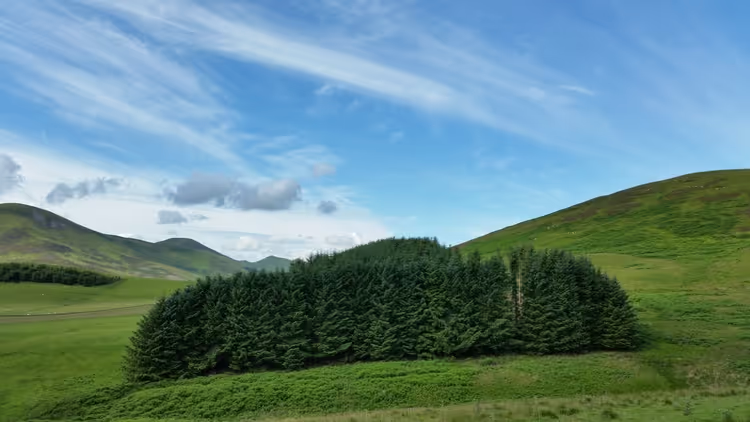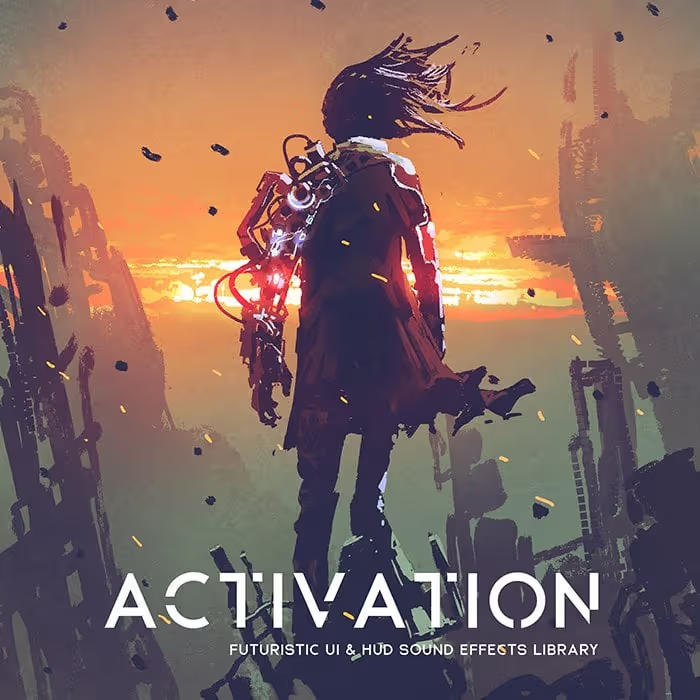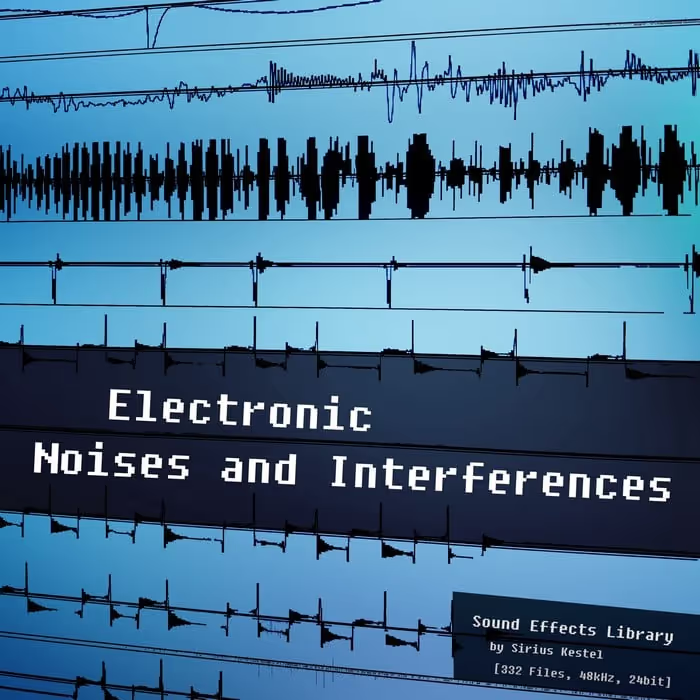Hi George, congrats on your first SFX library – what’s it all about?
Hi Asbjoern. My first library is a collection of ambiences recorded in the woodlands around Edinburgh. At first I only wanted to expand my personal library as I felt that I didn’t have nearly enough non-exotic nature ambiences, and I also needed lots of crow and raven sounds in the games I was working on. The library started to take shape after lengthy discussions with several people such as Iain McGregor (who was my sound design lecturer at university), Chris Watson (with whom I had the pleasure of attending a couple of nature recording workshops), and also yourself who encouraged me to launch the library commercially.
Where did you record the sounds – and what are some of the birds included in the library?

The sounds are all recorded in wooded areas in the Pentland Hills, in places such as Glencorse, Harlaw, Harperrig, Threipmuir or Loganlea. I’ve been hiking in these areas ever since we moved to Scotland in 2013 and I found a few places that were perfect for recording: far from traffic or human settlements and full of birds and wildlife. Some of the birds that I managed to record are as follows: wren, blackbird, European robin, chiffchaff, chaffinch, woodpecker, wood pigeon, crow, magpie, raven, jay, pheasant and many others.
How did you identify the various species of birds?
Ornithology is one of my hobbies so I constantly read books and articles on birds, especially the ones found in Britain. On top of that I use the RSPB website which has been extremely helpful in identifying birds that I was able to see or photograph. This time of the year I’m out recording birds at least once a week and it would be quite frustrating to not know my subjects.
What’s been your approach and setup for capturing clean nature recordings? Any essential tips for others looking to do nature recordings?
I usually hike with my recording gear and keep my ears open for places I can record. In spring it’s easier to navigate in the undergrowth as there isn’t that much vegetation and the insects aren’t a nuisance. Therefore hiking with a backpack, recorder bag and microphones is a good way to find quiet places and record clean ambiences. However starting in July the famous midges appear which makes things a bit more difficult.
While birds sing most of the day during spring and summer, the best time of day to record them is just before dawn.
Staying in one place for extended periods of time is out of the question, so my approach was to use 50m long cables and sit comfortably in my car. This limits the areas in which I can record, but I’m still able to reach good locations in my 4×4.
While birds sing most of the day during spring and summer, the best time of day to record them is just before dawn. In Scotland sun rises at about 4 am this time of the year, but there’s light outside as early as 3 am. Consequently I had to get up at about 2 am, drive to the location and set up my rig so that I could record the dawn chorus as soon as it started. This also means that human noise is generally not an issue as most sane people are still asleep at these hours.

As for equipment, I used my Sound Devices 633 recorder, Sound Devices 302 mixer and Sony PCM D100 handheld. The D100 was especially useful when hiking for long distances or when the cables I used weren’t long enough to reach places I knew would yield interesting recordings. With regards to microphones I used a pair of DPA 4060s in spaced omni mode and a pair of Line Audio CM3s in ORTF, plus the on-board mics on the D100 in wide mode. As already mentioned I used a pair of 50m cables that I laid down from the car to the places that seemed interesting. I had first realized long cables were a great solution for nature recording while on the Wildeye nature recording course in December last year. Sure, this doesn’t work if you want to record specific bird calls as spot effects, but for ambience recording it’s great.
What are some of your favorite recordings in library?
There’s two of them actually. One is the recording labeled “crazy crows”, and the other one is “wren robin blackbird”.
The second one is a great example of how these species have carved slices of the frequency spectrum for themselves, so that they don’t mask each other’s calls even if singing simultaneously.
The crazy crows one includes some interesting crow vocalizations in and of themselves, but they sound quite otherworldly when pitched down by an octave. The second one is a great example of how these species have carved slices of the frequency spectrum for themselves, so that they don’t mask each other’s calls even if singing simultaneously. (This theory was originally developed by Bernie Krause. More about it in his book “The Great Animal Orchestra”.)
Overall, what was it like, creating your first SFX library? And did you learn any lessons along the way you’d like to pass on?
It was definitely a learning experience. I knew field recording was serious work, but having to focus on a given theme and to redirect energy and resources towards it for a few months proved to be a job in itself. Waking up at 2 am several times per week was not a walk in the park, especially when at 9 am I had to be back in the studio to start my work in game audio.
However even with less sleep I found that being out in the middle of nowhere and taking it all in filled me with energy and helped me go through the day easily. I also learned that coffee and insect repellent are two things you absolutely can’t do without.
Get the full library below, with more than 2.5 hours of pristine nature sounds from Scotland:





